Last updated on Oct 14, 2025
Pacing in Writing: 10 Powerful Ways to Keep Readers Hooked
Dario Villirilli
Editor-in-Chief of the Reedsy blog, Dario is a graduate of Mälardalen University. As a freelance writer, he has written for many esteemed outlets aimed at writers. A traveler at heart, he can be found roaming the world and working from his laptop.
View profile →If you’ve ever bitten your nails in expectation while reading a novel — or struggled to focus on a particularly long passage of a book — then you already have firsthand experience when it comes to learning how readers can be affected by the pacing in writing. Pacing refers to the speed at which the action takes place. It’s a vital part of your story, and it takes time and careful consideration to get just right.
Why exactly is pacing important?
Think all you need is a compelling protagonist to hook readers? Well… you need a bit more than just that. Wonderfully drawn characters can’t keep your readers interested forever — even a book featuring beloved characters like Indiana Jones, Harry Potter, or Elizabeth Bennet would be a slog if the first fifty pages described them slowly going about their daily activities.
That's where pacing steps in. Pacing affects the mood of your story, helps develop ideas and themes, and allows your readers to connect to the characters and the events that surround them.
While it might be easy to think that a fast pace will be most effective, the truth is that it depends on the story you’re telling. For example, while thrillers tend to be quick and action-packed, romances and other character-driven stories sometimes work best when they take their time.
To see what "fast-paced" means, check out these 23 psychological thrillers that will make your head spin.
That said, the most important thing to keep in mind when you're planning your novel and thinking about pacing is balance. A single story can’t (and shouldn’t) be all fast or all slow. Instead, there should be a trade-off between the two. This provides variety, makes the story interesting, and keeps the readers hooked.
Think about it as music: it’s the highs and lows combined that makes a song appealing to the ear. If it was made up of a single, flat note, it would be pretty boring, wouldn’t it?

With that in mind, we'll turn to some ways to change up the pace of your story.
10 Techniques for Controlling Pacing in Writing (with Examples)
From simply changing the wording of a sentence to including — or excluding — entire subplots, there are a number of ways to control your story’s pace. If your story is too fast, it runs the risk of tiring readers, but if it’s too slow, you might bore them. So, how do you fix that?
Let’s take a look at 5 techniques to slow down the pace:
1. Lengthen your sentences
Longer sentences and longer paragraphs help slow down the pace, since they take longer to read and are often associated with formal writing and the explanation of more complicated ideas. Now, this doesn’t mean you should start adding unnecessary words, but rather that you should be intentional about your word choice — this will allow you to fully develop your ideas, give you a chance to show more introspection, and include more description. But more on that later!
Lengthy sentences are usually associated with more classical writers — think 19th century and earlier. Take this example from A Christmas Carol, one of Dickens' best works of all time. In it, Dickens describes his thought process behind the saying, “Dead as a door-nail:”
“Mind! I don’t mean to say that I know, of my own knowledge, what there is particularly dead about a door-nail. I might have been inclined, myself, to regard a coffin-nail as the deadest pieces of ironmongery in the trade. But the wisdom of our ancestors is in the simile; and my unhallowed hands shall not disturb it, or the Country’s done for. You will therefore permit me to repeat, emphatically, that Marley was as dead as a door-nail.”
The paragraph is placed at the very beginning of the story in the exposition. It establishes the character of the Narrator as somebody who's prone to tangents — like someone telling a story by the fire. The length of the sentences does mean that the story starts off slow, but it’s balanced with his odd observations.
Similarly, you can lengthen or shorten the lengths of your chapters to influence pacing. Curious to learn more? Read this post to learn how long a chapter should be.
2. Add descriptions
In other words, stop and smell the roses. Don’t rush to show what happened: show how it happened and in detail. Sure, it’s useful to be concise — but if your purpose is to have your readers take a breather, then adjectives are your friends.
Tolkien is famous for describing his scenery in detail and providing plenty of information about his world. While there’s plenty of action during battle scenes, he often uses descriptive passages to give his characters a break from all the misfortunes and challenges they face. Take this section from the The Two Towers, which describes the forest scenery that Merry and Pippin encounter after escaping from the orcs:
“The ground was rising steeply still, and it was becoming increasingly stony. The light grew broader as they went on, and soon they saw that there was a rock-wall before them: the side of a hill, or the abrupt end of some long root thrust out by the distant mountains. No trees grew on it, and the sun was falling full on its stony face. The twigs of the trees at its foot were stretched out stiff and still, as if reaching out to the warmth. Where all had looked so shabby and grey before, the wood now gleamed with rich brown, and with the smooth black-greys of bark like polished leather. The boles of the trees glowed with a soft green like young grass: early spring or a fleeting vision of it was about them.”
3. Include subplots
Shifting your story’s focus to a secondary storyline will decrease the pace at which the main story line progresses. The more shifts and subplots you include, the longer it’ll take to reach the resolution of the main storyline.
In Anna Karenina, there are two main storylines: Anna’s and Levin’s. These stories take place simultaneously, with constant back-and-forth shifts but little crossover. This allows readers to take a break from one story and jump into another, slowing down the pace at which each storyline resolves.
A note of caution: don’t go overboard with side plots. Anna Karenina works because the stories parallel each other, as the trajectories of their respective main characters end up being complete opposites. [Spoiler alert!] While Anna ends up alone and commits suicide, Levin puts aside his thoughts of death and ends up happily married with a son.
4. Use flashbacks and backstory
A good way to break the focus from the current narrative is to go back and show the readers what happened in the past. This way, you can simultaneously halt the story and give additional information and context to your readers. However, keep in mind that these devices should not be used for the sake of a change of pace. Instead, they should always fulfill a purpose within the story itself.
5. Add more introspection
More than just describing your character’s actions, show what they are thinking and how they are feeling. Show the reader the thought process that leads a character to make a specific decision.
Let’s take The Book Thief, for instance. This particular passage takes places right after Death has taken an enemy pilot who was involved in the bombing of Munich, and in it we get to learn Death’s perspective on humans and World War II:
“It’s probably fair to say that in all the years of Hitler’s reign, no person was able to serve the Führer as loyally as me. A human doesn’t have a heart like mine. The human heart is a line, whereas my own is a circle, and I have the endless ability to be in the right place at the right time. The consequence of this is that I’m always finding humans at their best and worst. I see their ugly and their beauty, and I wonder how the same thing can be both. Still, they have one thing I envy. Humans, if nothing else, have the good sense to die.”
Getting bored of slowing things down? Let’s now take a look at 5 techniques to speed things up:
6. Shorten your sentences
As you might expect, shorter sentences quicken the pace. They usually give a sense of urgency because they take less time to read. They also get directly to the point, allowing you to skip unnecessary description and processes that can be implied. Consider this sentence from Hitchhiker’s Guide to the Galaxy:
“Kettle, plug, fridge, milk, coffee. Yawn.”
Instead of taking the readers through the whole process of making a cup of coffee, Douglas Adams simply chose the words associated with the action, allowing readers to fill in the blanks.
7. Use more dialogue
Rapid dialogue will go a long way to increasing the pace of your story. Instead of long-winded descriptions, create captivating dialogue where your characters confront each other and show their personalities and quirks through it.
You can also use dialogue to show — or allude to — your character’s backstory, instead of interrupting the flow of the story with flashbacks or lengthy descriptions. Take this exchange between Robin and Strike, the main characters of The Cuckoo’s Calling.
“It’s a death threat,” she said. “Oh yea,” said Strike. “Nothing to worry about. They come in about once a week.” “But—” “It’s a disgruntled ex-client. Bit unhinged. He thinks he’s throwing me off the scent by using that paper.” “Surely, though — shouldn’t the police see it?” “Give them a laugh, you mean?” “It isn’t funny, it’s a death threat!” she said, and Strike realized why she had placed it, with its envelope, in the plastic pocket. He was mildly touched. “Just file it with the others,” he said, pointing towards the filing cabinets in the corner.
FREE COURSE
How to Write Believable Dialogue
Master the art of dialogue in 10 five-minute lessons.
8. Remove (or limit) secondary subplots
The fastest route is a straight line — so, if you want to get directly to the resolution, the best way to do so is to cut out any unnecessary plot points that take the reader away from the main narrative.
To use a previous example, if Tolstoy had limited Anna Karenina to her involvement with Vronsky, we would have a much shorter romance, instead of the 800+ pages of Russian society, politics, theology, and philosophy that we did get.
9. Use cliffhangers
Nothing keeps a reader hooked more than wanting to find out what happens next, which is why cliffhangers are such a popular device. They create a sense of tension and uncertainty that will drive the story forward — if you end a chapter on a high note but don’t resolve the action, there’s little option for the reader than to keep going.
Let’s see how it’s used in Harry Potter and the Prisoner of Azkaban:
“What?” Ron said again, holding Scabbers close to him, looking scared. “What’s my rat got to do with anything?” “That’s not a rat,” croaked Sirius Black suddenly. “What d’you mean — of course he’s a rat —” “No, he’s not,” said Lupin quietly. “He’s a wizard.” “An Animagus,’ said Black, ‘by the name of Peter Pettigrew.”
At this point, we all knew who Peter was and how he had been “murdered” by Sirius Black twelve years prior, but all that was suddenly changed when this bomb was dropped at the end of Chapter Seventeen — who could stop reading after that?

10. Increase the action
A chase. A fight scene. A race against time. Few things increase the pace of a story like a sense of urgency and danger! Even if you are writing a story with a lower pace, exciting plot points are necessary to keep your readers hooked. So, whether it comes from a battle of wits or otherwise, make sure you include some action. (And don't forget to use some excellent verbs to make it pop.)
Here is an example from Miss Peregrine’s Home for Peculiar Children.
“Chaos broke out. Panicked animals ricocheted off one another, throwing us against the wall so many times I got dizzy. The hollow let out an ear-splitting screech and began to lift sheep to its slavering jaws one after another, taking a blood-spurting bite from each and then tossing it aside like a gluttonous king gorging at a medieval feast.”
The children are being chased and hunted and their only option is to run. They spend the last two chapters of the book trying to do this, which eventually leads to their escape from Cairnholm Island.
There is no formula for a great story: it can be either fast or slow depending on how it is told. So, don’t be afraid to play with your story’s pacing and explore different ways in which a scene can be slowed down or sped up until you find the right fit. Above all, remember that nailing the pace is a matter of balance.
Feel like the pace of your story is fine, but your own writing speed is lacking? Check out our top tips for writing faster.
Hire a book coach on Reedsy
Kenneth Z.
Available to hire
What do you get when you combine an MFA, a decade of professional editing experience, and far too many wings and donuts? This guy.
Britny P.
Available to hire
Britny (she/they) is a YA fiction and pop culture non-fiction editor with over 7 years of traditional publishing experience.
Connolly B.
Available to hire
Former HarperCollins editor specializing in editorial assessments, developmental edits, and book coaching for YA, MG, and romance novels.



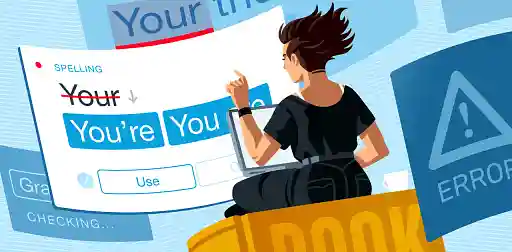




1 response
batmansbestfriend says:
10/12/2019 – 13:43
When it comes to pacing, one of the first questions I always ask myself is: "are the readers really gonna put up with this?" ...and by 'this,' I mean whatever I have decided the pacing should be. It causes me to rethink my decision. I use it most often when I've decided to slow the pacing down...as in, "are they really going to put up with this much time spent on THIS?" It does come in handy with fast pacing, but then it's more of a: "are they going to feel cheated?" Those two questions are vastly important, but I always summarize them down to wondering if it'll put the reader off or not (..."readers...put up with this?"). If you think about it from a readers POV then you have a starting point when it comes to pacing. After all, you want your writing read, don't you?